 |
An Architect Looks Back
By Ashihara Yoshinobu Page 3 Page 3
Design Office in the Chuo Koron Building
My partners and I were rescued by Chuo Koron. I asked them for some office space, and we were given a tiny room on the seventh floor, and there we began work. It was Mr. Kurimoto who really gave us our start.
An older alumni of the University of Tokyo, Naito Ryoichi, was then Chief of the Building Bureau in Yokohama, and when we had finished the Chuo Koron building, I went to see him. He asked me, "O.K., have you ever designed a hospital?" "Come on," I retorted, "You know I've never done anything but the Chuo Koron building." He laughed and said "I like you, you're honest," and he agreed to use me for the municipal hospital, teamed up with an expert on hospital design. It was just at the time when Murano Togo was doing the Yokohama City Hall building. They had had a lot of trouble getting the pilings in and other difficulties with construction on that job, so we worked extra hard on our building, in order not to cause Mr. Naito any concern. Things went pretty smoothly on that project from beginning to end. We got the Japan Builders' Association Prize for that design.
Naito was very happy with our work and gave us introductions that led to work on the Yamagata Prefectural Hospital and other buildings. Chuo Koron introduced me to the Iwanami Publishing Co., and little by little our work expanded. Introductions are the best way to grow. Iwanami let us do the whole design but President Kobayashi Isamu could be pretty sarcastic. Once I went to see him in the summertime and said politely, "It's very hot, isn't it." "Of course it's hot," he snapped, "summer is always hot. I can't bear air conditioning."
The request to do the Komazawa Olympic Gymnasium came while I was away in the United States, and we began the design work in 1961. Professor Kishida Hideto, who was acting advisor to the Olympic Committee, must have submitted our name. We really threw ourselves into the new project. The Chuo Koron office was too small, so we rented apartments here and there, and finally we found an apartment house on Omotesando (a broad avenue some call the Champs Elysées of Japan) where the basement units were all empty. We rented all of them and moved in. But it was underground so we never knew if it were raining or snowing, or whether it was night or day. We tried painting the walls green and the ceiling sky blue, but after all decided a basement office was no good. We looked for another location with better lighting and finally found the offices where we are presently in the Shibuya Sumitomo Building.
At the beginning, while we were doing the Chuo Koron project, we were working with our structural engineers, and there were about 12 or 13 of us. Before we had permanent quarters, the staff consisted of about fourteen or sixteen, but when we were in the apartment building in Omotesando, it had grown to about twenty.
The Sony Building
It was some time after that Inoue Kosuke came from Sony and asked us for an idea for a building they were in the process of planning. In those days Morita Akio (now chairman of Sony) was still young and we took a room in the Hotel Okura and discussed my proposed design into the wee hours of the night, finally agreeing on a plan. It was really a great challenge and thoroughly enjoyable work.
The Sony Building was a turning point not only for me, but for the Tokyo townscape, one might say. Its appearance a block east of the main Ginza Intersection caused this shopping and entertainment center to expand not only along the main avenue of Ginza but outwards on either hand. My idea for an exterior space of 30 square meters at one corner of the building grew out of my realization that Japanese create floor space only indoors, while the Italians, for example, build floor space out-of-doors. For the Sony Building, I included what I might call an "outdoor tokonoma," an exterior recess that would serve a similar function to the alcove found in sitting rooms of Japanese houses. The outdoor stage installed in this recess features all kinds of displays and presentations: it has a huge Christmas tree in December and is festooned with traditional decorations for the New Year. In the spring, there are girls handing out tulips imported from Holland or lily-of-the-valley plants from Hokkaido.
When we began to work out the figures, we found that no matter how expensive the merchandise sold there, it wouldn't pay for the high price of the site. But Morita said, "If you consider the cost of the show-room an investment in advertising, it doesn't matter how much it costs to build it-let's make this a showroom building." That made our petal-like arrangement of floors rotated at three-foot split levels the perfect plan. The first floor is a meeting place, and it has panel heating. You can wait there for half an hour and not be cold. It is fascinating to see the different kinds of people who gather there as evening comes on. Even if you are kept waiting, you do not get angry. It is gratifying to find that a building you put a lot of sweat and sleepless nights into has become a popular landmark.
Sauna Pleasures
I first became interested in the sauna before it was known in Japan. Hatsuko had a Finnish designer friend named Yki Nummi, who kept telling us how wonderful Finland was, so I decided to go and see what it was like. Just at the time I went, he was not there, but an architect friend of his named Pentti Ahola invited me to his home. I remember how beautiful his wife was. When it came to be evening, they said, "Why don't you take a sauna bath? " But they said the bath got to be 100°C, which made me rather reluctant, for I could not afford to have a heart attack in the middle of my trip. They assured me that such a thing would never happen, so in I went. Well, it was marvelous! And then, to leap into the lake outside, with the white night making everything seem fantastically surreal, and with no more on than a newborn babe-was an experience I will never forget.
That experience made me decide to build a sauna in Japan. I asked Pentti Ahola to send me the sauna stove, and ours became one of the first saunas in this country. That was years ago, in the late fifties. Many of our guests from abroad have used that sauna-the Finnish architect Arne Ervi, Hekki von Hertzen of Tapiola, Juhani Heinonen of Iväskyla, and many others.
Eventually I began to want an even better sauna, so I designed one for our summerhouse in the mountains of Hakone. Recently, however, it has become difficult to get firewood and I have become very busy; I do not have many opportunities to use it any more. Nowadays, I am sorry to say, for want of enough space in our Tokyo house, the sauna has been turned into a storage room.
The Japan Pavilion for the Montreal Exposition
The next big project to come our way was the Japan Pavilion for Expo '67 in Montreal. I had always wanted to do a project abroad, and at JETRO's request, went to Montreal to inspect the site. We had quite a bit of trouble and some good experiences working in unfamiliar terrain. On the airplane on the way over I met a very pleasant gentleman. He helped me get accommodations in New York at airline expense when flights were delayed by snow, and turned out to be the president of a famous escalator company. But then he asked me "Do you have elevators and escalators in Japan?" revealing an ignorance of this country that made me quite indignant. When we decided to use escalators in the Japan Pavilion we did not have the funds to buy them, so we asked for a donation from the Mitsubishi Electric Company. In due recognition of the Japanese donor, we had them emblazon "Mitsubishi" in big letters on the side, but the media misinterpreted this and accused Mitsubishi of practicing commercialist tactics at an international exposition. The weeklies in Japan even came to interview me about that, but I told them, "I just wanted to let the world know that Japan makes such things as escalators. I don't care what Japanese company it is, but people ought to know that not all the world's escalators are made by Dunbal or Otis."
The design of the pavilion was very modern, but using a log construction style in prestressed concrete, modeled after the Shosoin treasure storehouse in Nara in the eighth century. We could not get anyone for the assembly work in Canada so Taisei Corporation put in a bid and we made everything in Japan including half pretentioned beams and took it over. We brought over 15 or 16 Japanese construction workers to do the job but the Canadian union demanded that we hire the equivalent number of local workers. Well, the Canadian workers did nothing, while the Japanese workers in their rubber toed tabi, clambered all over the structure, setting the beams and bolting everything down with great speed. The Canadian workers had been star-gazing at first, but they soon began to watch, and the sight of the Japanese workers' efficiency and agility made them stare in amazement. It was a suspenseful moment at the end when the supports were taken off the post-tensioned beams, but it worked! We were so overjoyed and relieved that tears came to our eyes.
Another anecdote connected with the Expo '67 project involved the foreman in charge of the construction, a man from Taisei Corporation named Kobayashi. He was an interesting character who held the fifth rank in judo. Before he left for Canada he learned how to perform the Shinto rites traditionally performed on construction sites in Japan. In Montreal, when it came time to celebrate the customary rites for "raising the ridgepole," Kobayashi dressed up in priest's robes he had brought with him, waved the paper wand for ritual purification and said the proper prayers to appease the earth gods of the site. The Canadian media made quite a fuss about that, declaring that Japanese engineers were priests in disguise. Kobayashi became quite a celebrity.
Italy and Expo '70
Another project that was a highlight after the pavilion for the Montreal Expo came when I served as co-architect of the Italian pavilion for the World Exposition in Osaka in 1970. I was asked to collaborate with Italian architect Tommaso Valle on the project, and I was very happy to comply, so we began to make arrangements. A number of interesting things happened in connection with the building of the pavilion, but perhaps the most memorable were connected with the bidding and drawing up of contracts for the project. The Italian government sent an expert who specialized exclusively in tenders and contracts, and there in the Italian Embassy we mediated a fierce struggle for the job between two companies, finally coming to a settlement. The Italian government was pleased with the outcome and showed us great consideration and trust from that day on.
However, when it came time to draw up the contract with the construction company, the Italian government insisted on a clause stipulating the fines to be paid if the construction should be delayed. I told them it was nonsense to put in such a clause. In Japan, I said, there was no such thing as a delay in the work. Besides, the idea that it was all very well to be late if you just paid a fine was contrary to Japanese principles and totally out of order. But the Italian government declared that no contract in modern Italian history had ever been drawn up without this clause and that it was impossible to make an exception. So I said, what would happen if another country paid us off to delay the construction on your pavilion? Did such a clause mean that if we just paid the penalty we could take as long as we wanted? In Japan, I explained, that would be unthinkable. I insisted that an agreement between one human being and another had greater significance than could be settled by mere pecuniary penalties. Ultimately, however, we had to consent to inclusion of the clause, and the work went forward. It made me all the more determined to fulfill my promise.
Around the time the work was coming to an end, there was a strike in Italy and it seemed the displays for the pavilion would arrive late. It began to look as if the opening would be delayed after all, and we were on the verge of resigning ourselves to that eventuality. As the date for completion of the construction drew closer, all of us, including the construction workers, would eat our lunches hurriedly and hasten back to work. The carpenters, painters, and electricians who had come from Italy to assist in the building, however, took two-hour lunch breaks, imbibing wine with their meal. We Japanese, on the other hand, began to work at fever pitch as the deadline approached, until finally at twelve midnight on the agreed day, we swept the place clean and the entire project was finished as promised. The next morning a representative came from the Italian government. When he found that we had fulfilled the contract on time as promised, he was astounded and delighted. I told him, "For whatever reason, we would be just as much inconvenienced as the Italian government by any delay; that's why we finished it on time." The representative said that in his experience, this was a first in Italian history; he could not seem to get over it, thinking I was a magician or something, but all the same, he was very happy that it was completed in such a short time.
After the pavilion opened, there were various memorable events. Italian humanism had its heyday, one might say; there were love affairs among the staff and quite a few international marriages. There was one memorable wedding at Shimogamo Shrine in Kyoto, in which I stood up as "go-between" for the bride and groom, and the Italian ambassador attended.
It was just at that time that the late prime minister Aldo Moro came to visit Japan. He did me the tremendous honor of bringing with him the Order Commendatore, which he presented to me in an intimate ceremony at the Italian Embassy in Tokyo. I will never forget the warmth of Prime Minister Moro's handshake at that time, and was shocked and greatly saddened by his assassination.
Having been involved in such affairs, both professional and private, I made the acquaintance of many wonderful people, and I feel a surge of nostalgia whenever l visit Rome and meet old friends. Perhaps what we did in building the pavilion impressed the Italian government because they had had so little contact with Japanese architects. It is well known that Japanese work hard, but I was gratified for the opportunity to show them that we also have a strong sense of obligation and determination to keep the promises we make.
|
 |
 |
 |
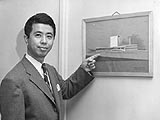 |
| Perspective drawing of municipal hospital |
 |
Municipal hospital
in Yokohama |
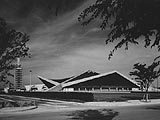 |
| Komazawa Olympic Gymnasium |
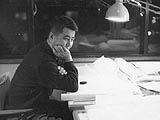 |
Thinking out a design
in the drafting room |
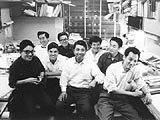 |
My staff while in the
Chuo Koron Building |
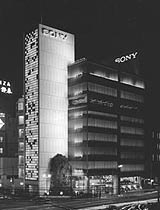 |
The SONY Building
in Ginza |
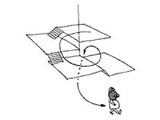 |
 |
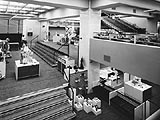 |
| Interior of the SONY Building |
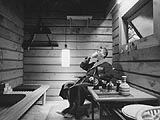 |
| Sauna in my Tokyo home |
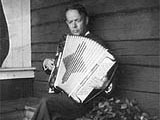 |
| Hekki von Hertzen |
 |
| Sauna at my Hakone summerhouse |
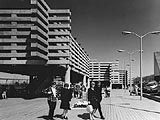 |
 |
 |
| Japan Pavilion at Expo' 67 in Montreal |
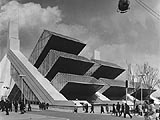 |
| Italian Pavilion in Osaka |
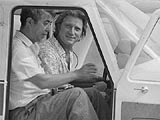 |
With Tommaso Valle
in his private plane |
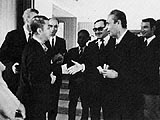 |
| Shaking hands with former Prime Minister Aldo Moro |
|
 |